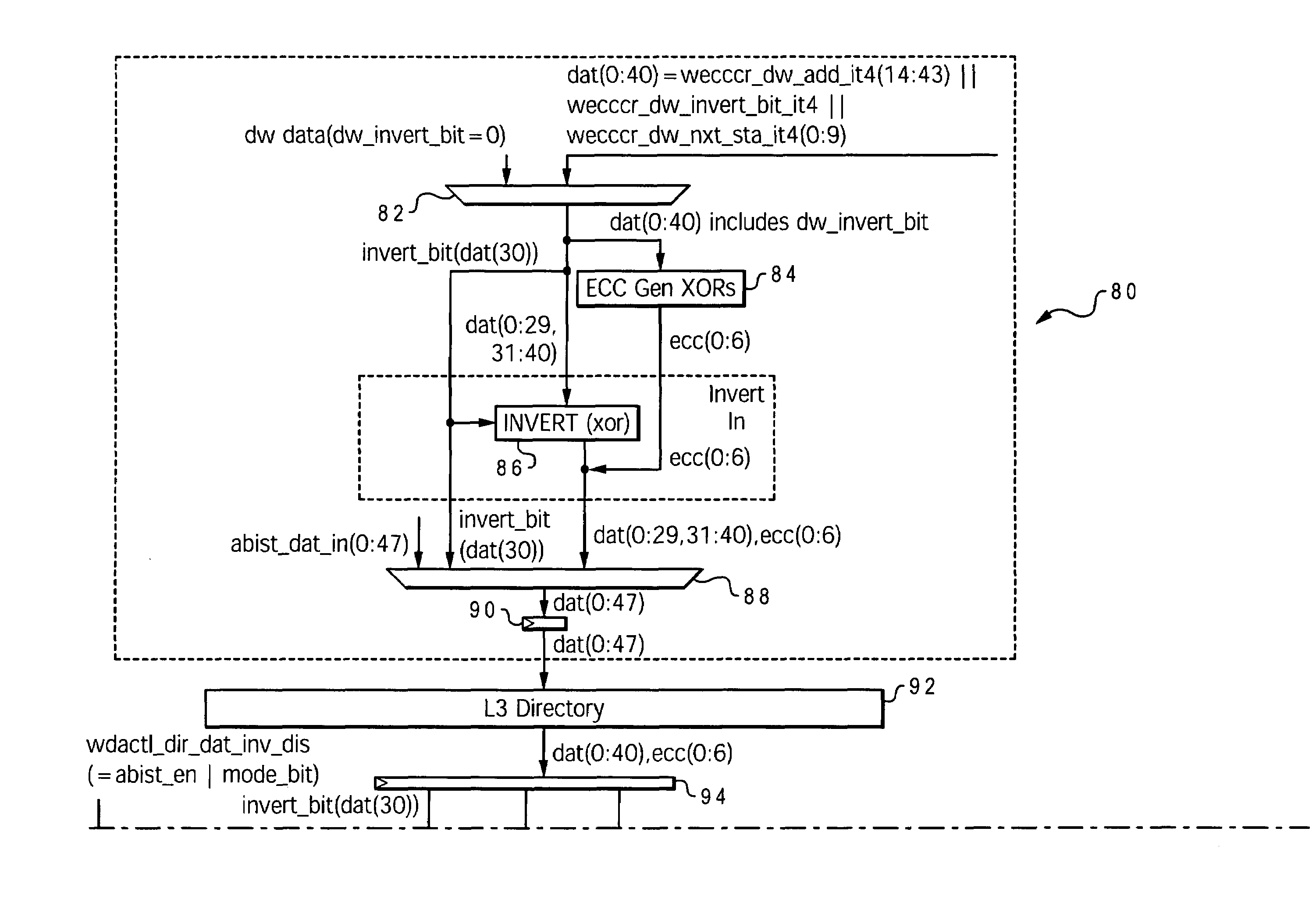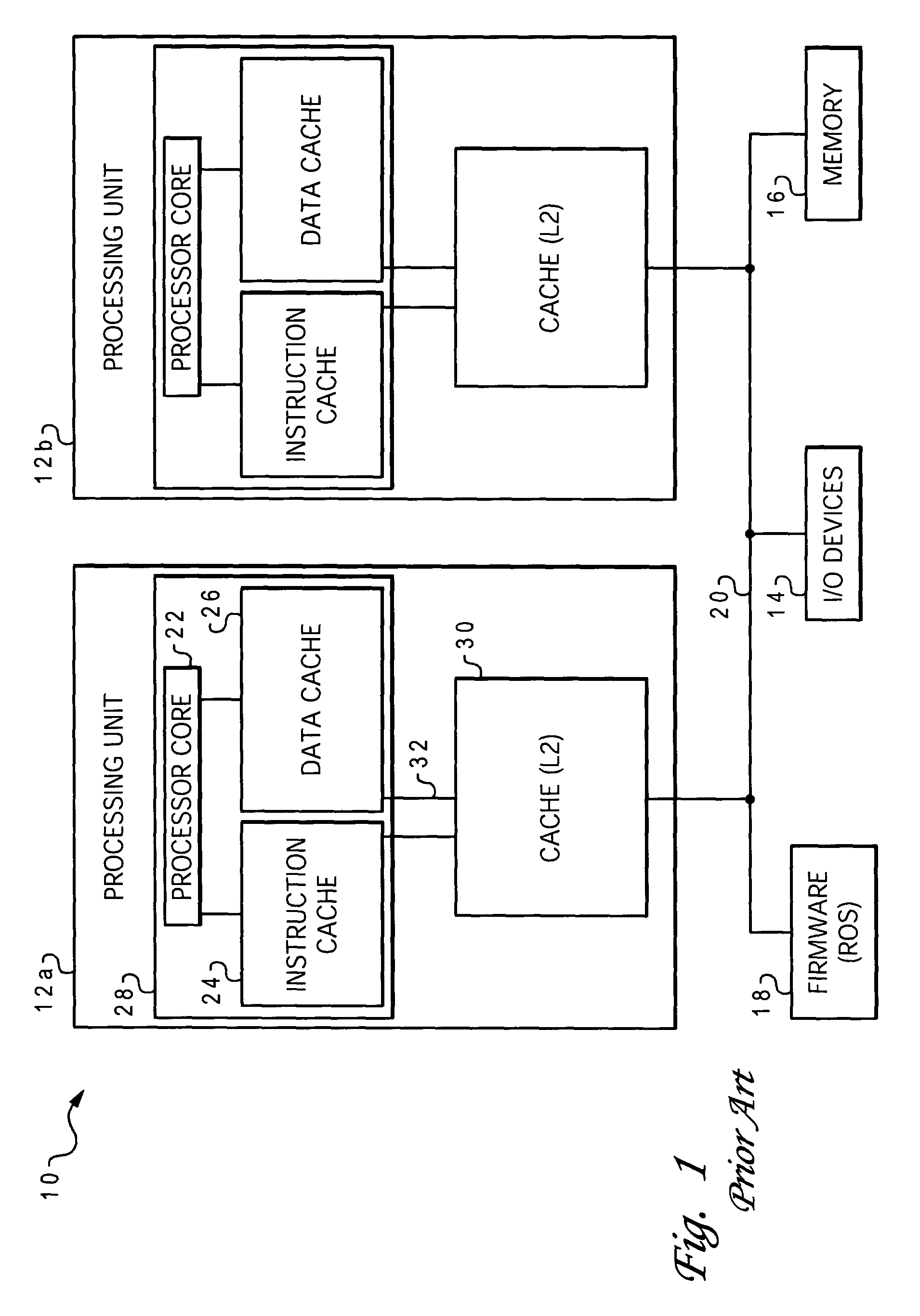Application of special ECC matrix for solving stuck bit faults in an ECC protected mechanism
a technology matrix, applied in the field of data processing system, can solve the problems of ecc protected mechanism not being able to determine the proper data stream, ecc protected mechanism cannot detect and correct single-bit data, cache block may contain incorrect value, etc., to achieve the effect of improving the memory structure of the computer system
- Summary
- Abstract
- Description
- Claims
- Application Information
AI Technical Summary
Benefits of technology
Problems solved by technology
Method used
Image
Examples
Embodiment Construction
)
[0030]As explained in the Background section, conventional error correction code (ECC) circuitry is inadequate for addressing hard errors (stuck bits) in computer devices such as a memory array (e.g., cache) or communications link (e.g., system bus). The present invention solves the problems of stuck bits through a new hardware mechanism that uses a special ECC matrix to recover from stuck fault directory array conditions. The ECC matrix is adapted to apply to a new bit that is included with the cache directory address / tag or system bus transmission, an additional “inversion” bit which indicates the relative polarity of the stored information. The following description implements the invention in a third level (L3) cache directory array, but those skilled in the art will appreciate that it is equally useful for other memory devices which store values (program instructions or operand data).
[0031]FIG. 3A shows an ECC matrix 70 that is designed, according to prior art techniques, for ...
PUM
 Login to View More
Login to View More Abstract
Description
Claims
Application Information
 Login to View More
Login to View More - R&D
- Intellectual Property
- Life Sciences
- Materials
- Tech Scout
- Unparalleled Data Quality
- Higher Quality Content
- 60% Fewer Hallucinations
Browse by: Latest US Patents, China's latest patents, Technical Efficacy Thesaurus, Application Domain, Technology Topic, Popular Technical Reports.
© 2025 PatSnap. All rights reserved.Legal|Privacy policy|Modern Slavery Act Transparency Statement|Sitemap|About US| Contact US: help@patsnap.com



